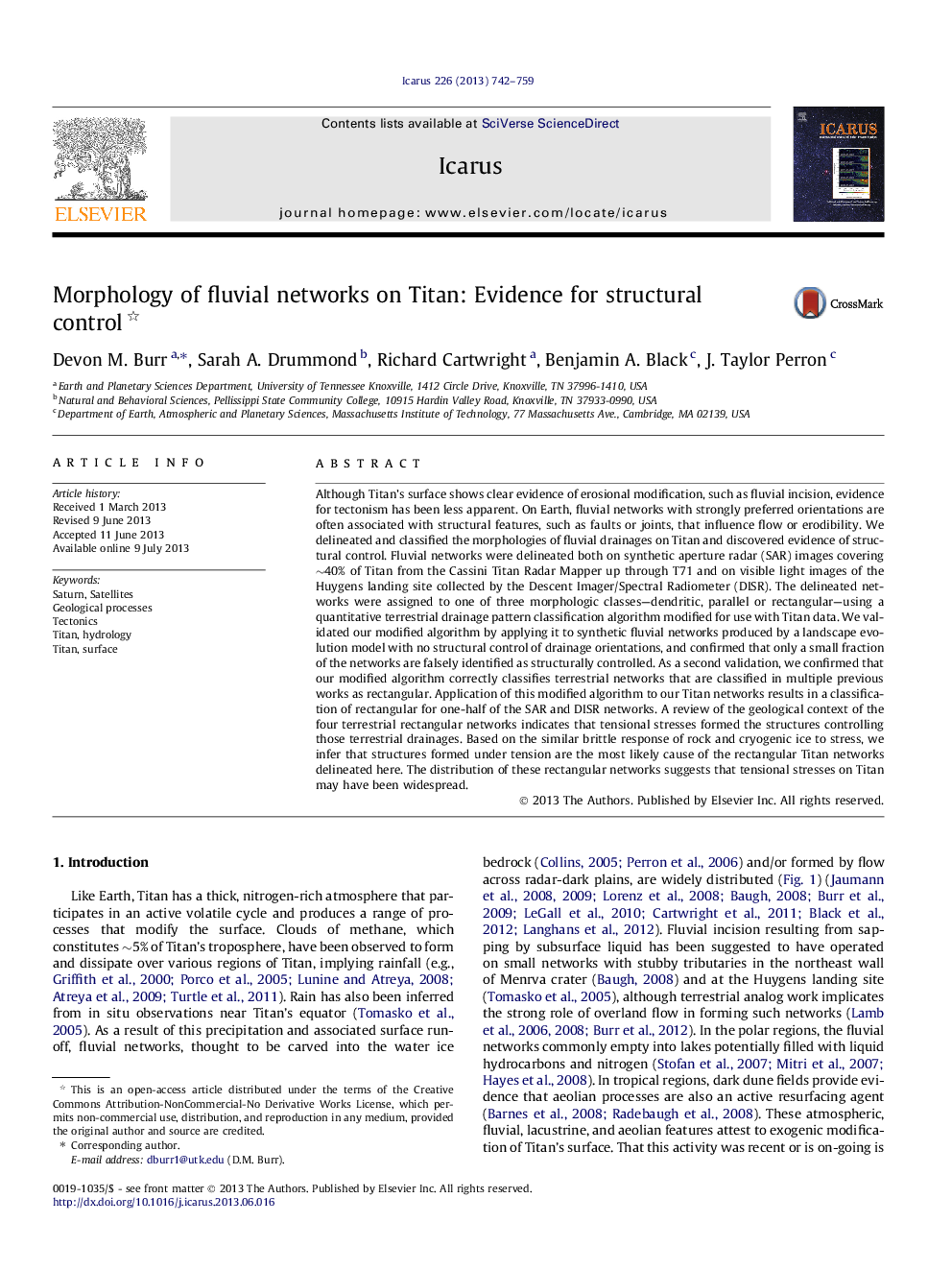| Article ID | Journal | Published Year | Pages | File Type |
|---|---|---|---|---|
| 10701338 | Icarus | 2013 | 18 Pages |
Abstract
Although Titan's surface shows clear evidence of erosional modification, such as fluvial incision, evidence for tectonism has been less apparent. On Earth, fluvial networks with strongly preferred orientations are often associated with structural features, such as faults or joints, that influence flow or erodibility. We delineated and classified the morphologies of fluvial drainages on Titan and discovered evidence of structural control. Fluvial networks were delineated both on synthetic aperture radar (SAR) images covering â¼40% of Titan from the Cassini Titan Radar Mapper up through T71 and on visible light images of the Huygens landing site collected by the Descent Imager/Spectral Radiometer (DISR). The delineated networks were assigned to one of three morphologic classes-dendritic, parallel or rectangular-using a quantitative terrestrial drainage pattern classification algorithm modified for use with Titan data. We validated our modified algorithm by applying it to synthetic fluvial networks produced by a landscape evolution model with no structural control of drainage orientations, and confirmed that only a small fraction of the networks are falsely identified as structurally controlled. As a second validation, we confirmed that our modified algorithm correctly classifies terrestrial networks that are classified in multiple previous works as rectangular. Application of this modified algorithm to our Titan networks results in a classification of rectangular for one-half of the SAR and DISR networks. A review of the geological context of the four terrestrial rectangular networks indicates that tensional stresses formed the structures controlling those terrestrial drainages. Based on the similar brittle response of rock and cryogenic ice to stress, we infer that structures formed under tension are the most likely cause of the rectangular Titan networks delineated here. The distribution of these rectangular networks suggests that tensional stresses on Titan may have been widespread.
Related Topics
Physical Sciences and Engineering
Earth and Planetary Sciences
Space and Planetary Science
Authors
Devon M. Burr, Sarah A. Drummond, Richard Cartwright, Benjamin A. Black, J. Taylor Perron,
